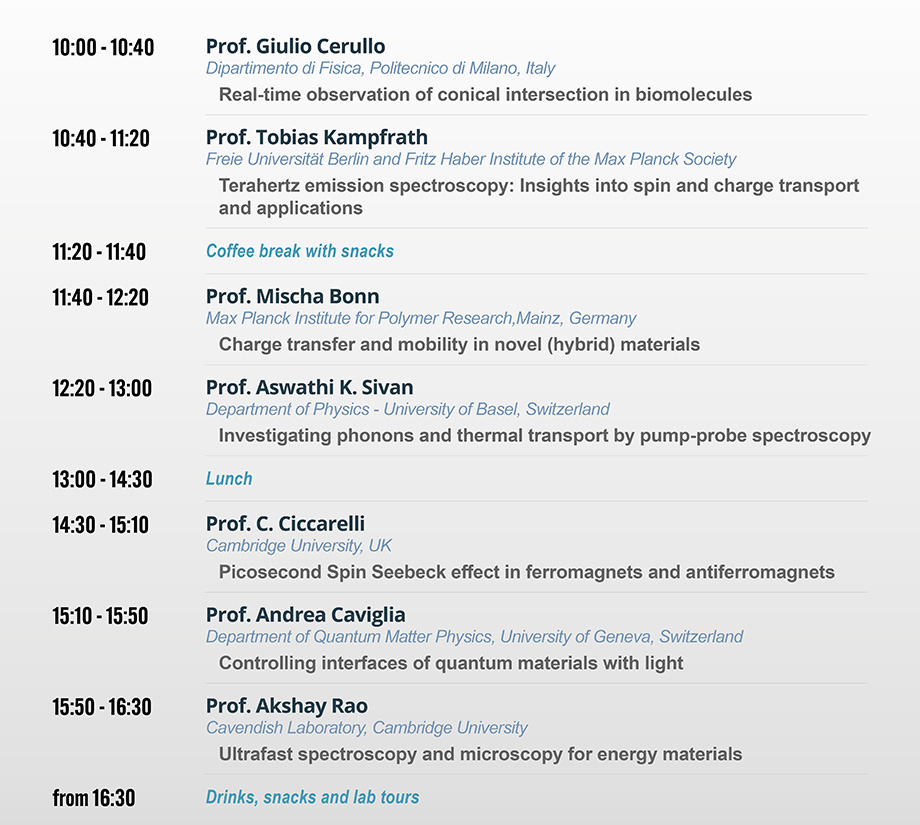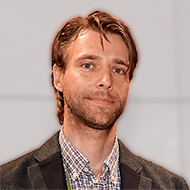 Prof. Mischa Bonn
Prof. Mischa Bonn
Mischa Bonn, Max Planck Director at the Max Planck Institute for Polymer Research, in Mainz, Germany studied Physical Chemistry at University of Amsterdam. He received his PhD from the FOM-Institute for Atomic and Molecular Physics, as well in Amsterdam. In 1997 he became Humboldt and European Fellow at the Fritz Haber Institut der Max Planck Gesellschaft, Berlin, in the groups of G. Ertl and M. Wolf. 1998 he joined as visiting scientists the group of Heinz at the Columbia University NY, USA.
In 1999 he was appointed as assistant professor at the Leiden Institute of Chemistry and promoted to associate professor with tenure in 2002. From 2003 to 2013 he worked as Group Leader at the FOM-Institute for Atomic and Molecular Physics. In 2011 he joined the Max Planck Institute for Polymer Research, where he is currently in charge as managing director. In parallel he became also honorary professor at the Johannes Gutenberg University of Mainz. Additionally, he still serves as an extraordinary Professor awarded to him in 2005 from the Physics Departement of the University of Amsterdam. His research areas focus on label-free (ultrafast) vibrational spectroscopy and microscopy of biomolecular systems and water in such systems, including model systems for biological membranes. Further interest is centered around studies of carrier dynamics in photovoltaic building blocks. He is author of almost 250 peer reviewed papers in highly ranked journals. For his research he received numerous prizes and fellowships such as the Gold Medal from the Royal Dutch Chemical Society (2009), personal Fellowship (’VICI’) from the Netherlands Scientific Organization (NWO) for research, elected Member of ‘The Young Academy’ of the ’Royal Dutch Academy of Arts and Sciences’ (KNAW), Amsterdam and a personal fellowship from the Japanese Society for the Promotion of Sciences (JSPS);
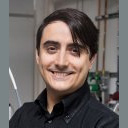 Prof. Andrea Caviglia
Prof. Andrea Caviglia
Andrea Caviglia is a Professor at the Department of Quantum Matter Physics, University of Geneva, Switzerland, where he leads the Laboratory for Designer Quantum Materials. His research is devoted to the understanding and control of fundamental new properties of matter arising from quantum principles. His laboratory combines atomic scale synthesis of quantum materials with advanced light sources to engineer material properties in and out of equilibrium. These experimental innovations have enabled a number of discoveries in the field of quantum material control including light-induced coherent spin-waves transport in antiferromagnets, light control of magnetic order and ultrafast strain engineering in correlated oxides. He has also contributed to the unveiling of emergent phenomena in quantum materials engineered at the atomic scale, including electronic and topological reconstructions, spin-orbital quantum states, quantum oscillations and superconductivity at oxide interfaces.
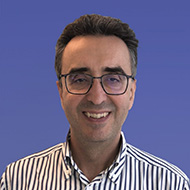 Prof. Giulio Cerullo
Prof. Giulio Cerullo
Giulio Cerullo is a Full Professor with the Physics Department, Politecnico di Milano, where he leads the Ultrafast Optical Spectroscopy laboratory. Prof. Cerullo’s research activity covers a broad area known as “Ultrafast Optical Science”, and concerns on the one hand pushing our capabilities to generate and manipulate ultrashort light pulses, and on the other hand using such pulses to capture the dynamics of ultrafast events in molecular and solid-state systems. He has published over 450 papers which have received >25000 citations (H-index: 80). He is a Fellow of the Optical Society of America and of the European Physical Society and Chair of the Quantum Electronics and Optics Division of the European Physical Society. He is the recipient of an ERC Advanced Grant (2012-2017) on two-dimensional electronic spectroscopy of biomolecules. He has been General Chair of the conferences CLEO/Europe 2017, Ultrafast Phenomena 2018 and the International Conference on Raman Spectroscopy 2020.
 Prof. C. Ciccarelli
Prof. C. Ciccarelli
Chiara Ciccarelli is a Lecturer at the Cavendish Laboratory in Cambridge. She received her PhD from Cambridge in 2012 and from 2012 to 2016 held a Junior Research Fellowship at Gonville and Caius College (Cambridge). She is a Royal Society University Research Fellow since October 2017. Her research focusses on the study of spin-charge conversion effects in inversion-asymmetric magnetic structures and at superconductor-ferromagnet interfaces. More recently she moved part of her research to ultra-fast spintronics. She has given more than 30 invited talks at international conferences in the past five years and she is participating to different international networks including a European COST action and an Innovative Training Network on the theme of ultra-fast magnetism.
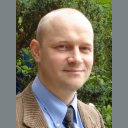 Prof. Tobias Kampfrath
Prof. Tobias Kampfrath
Professor (W3) of Experimental Physics at Freie Universität Berlin
Research topics: Study and control of ultrafast processes in complex solids, e.g., terahertz dynamics and terahertz transport of electrons and spins in nanostructures and at interfaces; Nonlinear terahertz spectroscopy of solvents; Terahertz radiation: generation, steering, interaction with tailored matter.
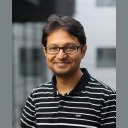 Prof. Akshay Rao
Prof. Akshay Rao
Akshay received his undergraduate degree from St Stephen’s College, University of Delhi in 2006 and his MSc from the University of Sheffield in 2007. He received his PhD from the University of Cambridge in 2011, working in the group of Prof. Sir Richard Friend, following which he held a Junior Research Fellowship at Cambridge.
In October 2014 he started his independent research group in Cambridge suppored by an EPSRC Early Career Fellowship and Winton Advanced Research Fellowship. He currently holds the Harding Assistant Professorship at the Cavendish Laboratory in Cambridge. His research group is interested in the optical and electronic properties of next generation energy materials and studies these materials with novel optical spectroscopies and microscopies, as well as using the insights gained to develop new materials and device concepts. Akshay is also co-founder of two startups, Cambridge Photon Technology and Cambridge VisIon.
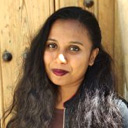 Dr Aswathi K. Sivan
Dr Aswathi K. Sivan
Aswathi K. Sivan received her diploma in Physics from the University of Mumbai in 2017. From 2012 to 2017, she was an Innovation in Science Pursuit for Inspired Research(INSPIRE) fellow. In 2021, she received her doctorate in Physics from the Università di Roma "Sapienza" with summa cum laude. During her Ph.D., she studied the ultrafast carrier dynamics in nanowires of different semiconducting materials. She is an expert in femtosecond transient absorption spectroscopy of nanostructures. Currently, she is a postdoc at the Nanophononics group of Prof. Ilaria Zardo at the University of Basel, Switzerland. Her research interests include carrier-phonon interactions and lattice dynamics of low-dimensional structures.


